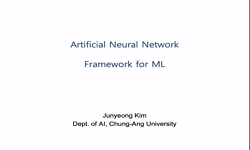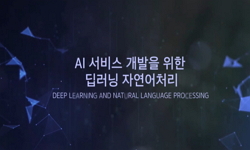In face recognition, sometimes the number of available training samples for single category is insufficient. Therefore, the performances of models trained by convolutional neural network are not ideal. The small sample face recognition algorithm based...
http://chineseinput.net/에서 pinyin(병음)방식으로 중국어를 변환할 수 있습니다.
변환된 중국어를 복사하여 사용하시면 됩니다.
- 中文 을 입력하시려면 zhongwen을 입력하시고 space를누르시면됩니다.
- 北京 을 입력하시려면 beijing을 입력하시고 space를 누르시면 됩니다.


Small Sample Face Recognition Algorithm based on Novel Siamese Network = Small Sample Face Recognition Algorithm based on Novel Siamese Network
한글로보기https://www.riss.kr/link?id=A106004916
-
저자
( Jianming Zhang ) (Changsha University of Science and Technology) ; ( Xiaokang Jin ) (Changsha University of Science and Technology) ; ( Yukai Liu ) (Changsha University of Science and Technology) ; ( Arun Kumar Sangaiah ) (Vellore Institute of Technology) ; ( Jin Wang ) (Changsha University of Science & Technology)

- 발행기관
- 학술지명
- 권호사항
-
발행연도
2018
-
작성언어
-
- 주제어
-
등재정보
KCI등재,SCOPUS,ESCI
-
자료형태
학술저널
-
수록면
1464-1478(15쪽)
-
KCI 피인용횟수
1
- DOI식별코드
- 제공처
-
0
상세조회 -
0
다운로드
부가정보
다국어 초록 (Multilingual Abstract)
In face recognition, sometimes the number of available training samples for single category is insufficient. Therefore, the performances of models trained by convolutional neural network are not ideal. The small sample face recognition algorithm based on novel Siamese network is proposed in this paper, which doesn’t need rich samples for training. The algorithm designs and realizes a new Siamese network model, SiameseFace1, which uses pairs of face images as inputs and maps them to target space so that the L2 norm distance in target space can represent the semantic distance in input space. The mapping is represented by the neural network in supervised learning. Moreover, a more lightweight Siamese network model, SiameseFace2, is designed to reduce the network parameters without losing accuracy. We also present a new method to generate training data and expand the number of training samples for single category in AR and labeled faces in the wild (LFW) datasets, which improves the recognition accuracy of the models. Four loss functions are adopted to carry out experiments on AR and LFW datasets. The results show that the contrastive loss function combined with new Siamese network model in this paper can effectively improve the accuracy of face recognition.
참고문헌 (Reference)
1 Parchami. M, "Video-based face recognition using ensemble of haar-like deep convolutional neural networks" 2017
2 이상걸, "Variations of AlexNet and GoogLeNet to Improve Korean Character Recognition Performance" 한국정보처리학회 14 (14): 205-217, 2018
3 Tsalakanidou. F, "Use of depth and colour eigenfaces for face recognition" 24 (24): 1427-1435, 2003
4 Blanco-Gonzalo R, "Time evolution of face recognition in accessible scenarios" 5 (5): 24-24, 2015
5 Zhang. L, "Sparse representation or collaborative representation: Which helps face recognition?" 2011
6 Ya. Tu, "Semi-supervised Learning with Generative Adversarial Networks on Digital Signal Modulation Classification" 55 (55): 243-254, 2018
7 Wright. J, "Robust face recognition via sparse representation" 31 (31): 210-227, 2009
8 Vo. D. M, "Robust face recognition via hierarchical collaborative representation" 432 : 332–346-332–346, 2018
9 Zhu. Z, "Recover canonical-view faces in the wild with deep neural networks"
10 Sainath. T. N, "Multichannel signal processing with deep neural networks for automatic speech recognition" 25 (25): 965-979, 2017
1 Parchami. M, "Video-based face recognition using ensemble of haar-like deep convolutional neural networks" 2017
2 이상걸, "Variations of AlexNet and GoogLeNet to Improve Korean Character Recognition Performance" 한국정보처리학회 14 (14): 205-217, 2018
3 Tsalakanidou. F, "Use of depth and colour eigenfaces for face recognition" 24 (24): 1427-1435, 2003
4 Blanco-Gonzalo R, "Time evolution of face recognition in accessible scenarios" 5 (5): 24-24, 2015
5 Zhang. L, "Sparse representation or collaborative representation: Which helps face recognition?" 2011
6 Ya. Tu, "Semi-supervised Learning with Generative Adversarial Networks on Digital Signal Modulation Classification" 55 (55): 243-254, 2018
7 Wright. J, "Robust face recognition via sparse representation" 31 (31): 210-227, 2009
8 Vo. D. M, "Robust face recognition via hierarchical collaborative representation" 432 : 332–346-332–346, 2018
9 Zhu. Z, "Recover canonical-view faces in the wild with deep neural networks"
10 Sainath. T. N, "Multichannel signal processing with deep neural networks for automatic speech recognition" 25 (25): 965-979, 2017
11 Liu. F, "Local similarity based linear discriminant analysis for face recognition with single sample per person" 2014
12 Shaham. U, "Learning by coincidence: siamese networks and common variable learning" 74 : 52-63, 2018
13 Chopra. S, "Learning a similarity metric discriminatively, with application to face verification" 2005
14 Koo K M, "Image recognition performance enhancements using image normalization" 7 (7): 33-33, 2017
15 Maze. B, "IARPA Janus Benchmark–C: Face Dataset and Protocol" 2018
16 Whitelam. C, "IARPA Janus Benchmark-B Face Dataset" 2017
17 Yang. M, "Gabor feature based sparse representation for face recognition with gabor occlusion dictionary" 2010
18 Simonyan. K, "Fisher Vector Faces in the Wild" 2013
19 Barkan. O, "Fast high dimensional vector multiplication face recognition" 2013
20 Stephen. ID, "Facial Shape Analysis Identifies Valid Cues to Aspects of Physiological Health in Caucasian, Asian, and African Populations" 8 : 2017
21 Schroff. F, "FaceNet: A unified embedding for face recognition and clustering" 2015
22 He. X, "Face recognition using laplacianfaces" 27 (27): 328-340, 2005
23 Chen Li, "Face Recognition Based on the Combination of Enhanced Local Texture Feature and DBN under Complex Illumination Conditions" 한국정보처리학회 14 (14): 191-204, 2018
24 Tran. L, "Disentangled representation learning gan for pose-invariant face recognition" 2017
25 Taigman. Y, "DeepFace: closing the gap to human-level performance in face verification" 2014
26 Yi. Sun, "Deep learning face representation from predicting 10,000 classes" 2014
27 Yi. Sun, "Deep learning face representation by joint identification-verification" 2014
28 Ning Yu, "Deep Learning in Genomic and Medical Image Data Analysis: Challenges and Approaches" 한국정보처리학회 13 (13): 204-214, 2017
29 Berlemont. S, "Class-balanced siamese neural networks" 273 : 47-56, 2018
30 CHEN. Dong, "Blessing of dimensionality: high dimensional feature and its efficient compression for face verification" 2013
31 Chen. D, "Bayesian face revisited: A joint formulation" 2012
동일학술지(권/호) 다른 논문
-
- 한국정보처리학회
- Chen Li
- 2018
- KCI등재,SCOPUS,ESCI
-
CNN-LSTM Coupled Model for Prediction of Waterworks Operation Data
- 한국정보처리학회
- Kerang Cao
- 2018
- KCI등재,SCOPUS,ESCI
-
Object tracking with the multi-templates regression model based MS algorithm
- 한국정보처리학회
- Hua Zhang
- 2018
- KCI등재,SCOPUS,ESCI
-
Video Captioning with Visual and Semantic Features
- 한국정보처리학회
- 이수진
- 2018
- KCI등재,SCOPUS,ESCI
분석정보
인용정보 인용지수 설명보기
학술지 이력
| 연월일 | 이력구분 | 이력상세 | 등재구분 |
|---|---|---|---|
| 2023 | 평가예정 | 해외DB학술지평가 신청대상 (해외등재 학술지 평가) | |
| 2020-01-01 | 평가 | 등재학술지 유지 (해외등재 학술지 평가) |  |
| 2012-01-01 | 평가 | 등재학술지 선정 (등재후보2차) |  |
| 2011-01-01 | 평가 | 등재후보 1차 PASS (등재후보1차) |  |
| 2009-01-01 | 평가 | 등재후보학술지 선정 (신규평가) |  |
학술지 인용정보
| 기준연도 | WOS-KCI 통합IF(2년) | KCIF(2년) | KCIF(3년) |
|---|---|---|---|
| 2016 | 0.09 | 0.09 | 0.09 |
| KCIF(4년) | KCIF(5년) | 중심성지수(3년) | 즉시성지수 |
| 0.07 | 0.06 | 0.254 | 0.59 |




 KCI
KCI KISS
KISS



